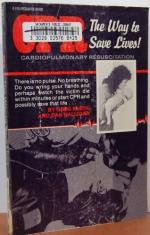|
This section contains 1,783 words (approx. 6 pages at 300 words per page) |

|
Overview
Cardiopulmonary Resuscitation (CPR) is an emergency first aid procedure designed to re-establish or simulate heart and lung action. During cardiac arrest, CPR provides a percentage of oxygenated blood to the heart and brain, helping to keep these organs alive until advanced life support is provided. CPR techniques focus on the "ABCs" of resuscitation—Airway, Breathing, and Circulation. Modern CPR was introduced in the medical community in the late 1950s, and is delivered using rescue breathing and chest compressions. The advent of CPR contributed to fundamental changes in the delivery of medical care, created ethical end-of-life considerations, and influenced outlook on health and fitness.
Background
During the 1950s, American physicians James Elam and Peter Safar were the first contemporary researchers of the airway "A" and breathing "B" components of CPR. Elam doubted the methods then-in-use for artificial respiration...|
This section contains 1,783 words (approx. 6 pages at 300 words per page) |

|


